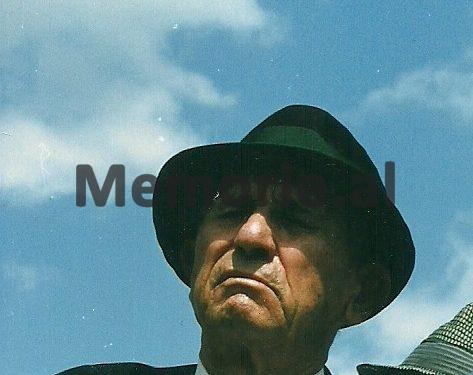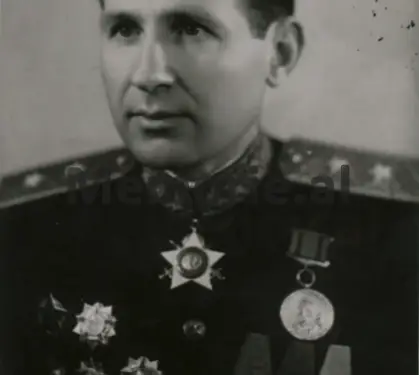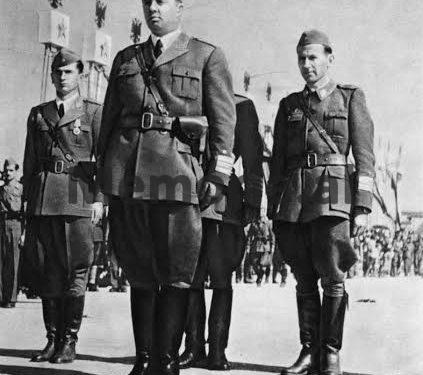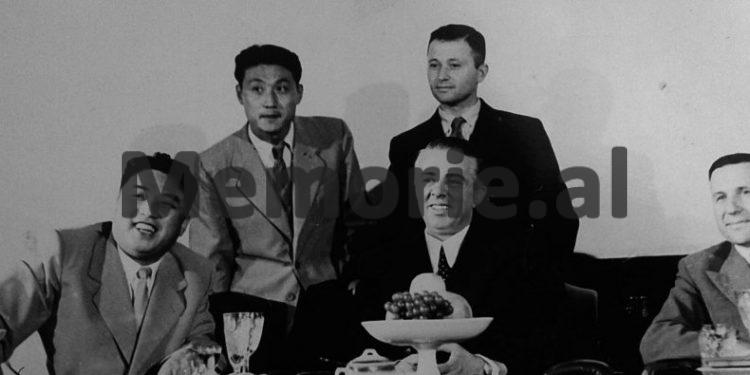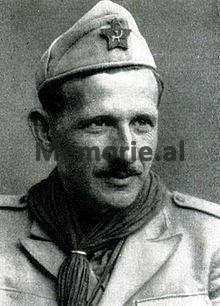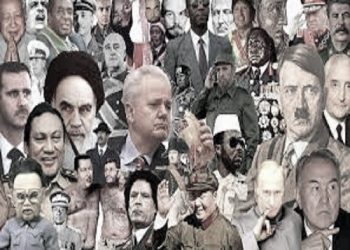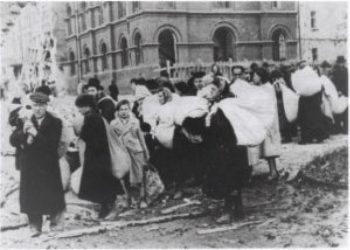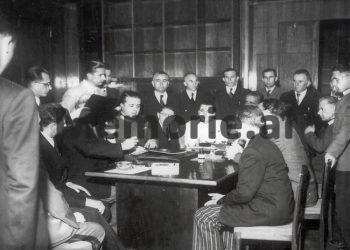Dashnor Kaloçi
The fourth part
Memorie.al/ publishes the unknown testimonies of Colonel Idriz Seit Sadikaj, former senior military officer of the State Security in the Ministry of Internal Affairs and Mehmet Shehu’s closest collaborator since childhood when they were close friends in the village of Çorush of Mallakastra, who in 1982 was sentenced to 10 years in political prison, as well as the testimonies of former senior State Security officers TN and M.Gj. who have served for many years at the former secretary of the Central Committee of the ALP and member of the Politburo, Hysni Kapo, who covered the organs of the ‘Dictatorship of the Proletariat’, such as: the Ministry of Internal Affairs, the State Security, the Ministry of Defense People’s Courts, Courts, Investigations, Prosecution, etc. Their rare testimonies on the mysteries of Hysni Kapos’s death in Paris, Vito’s accusation against the Minister of Internal Affairs, Kadri Hazbiu, as well as the possible scenario of Enver Hoxha for the elimination of Kapos and Shehu since 1973, when Hoxha passed a severe heart attack and his life was questioned, and for that, he initially blamed his doctors who had suggested and approached Hysni Kapo!
“In September 1979, after learning of the death of Hysni Kapos in one of the medical clinics in Paris, where he had been hospitalized for a few days and was being treated for a serious illness, his wife Vito Kapo immediately met the minister of Internal Affairs, Kadri Hazbiu and in the midst of tears and sobs, addressed him shouting: ‘Why did you poison Hysni ?!’ After this very strong and very shocking accusation that she made against him, Minister Hazbiu, completely restrained and he calmly replied: ‘What do you have that you address me, why do not you tell him ?!’ By the word ‘him’, Hazbi was referring to Enver Hoxha. The subtext of the response of Kadri Hazbiu, a very refined and intelligent man, who had headed the organs of the Ministry of Internal Affairs and State Security since 1949, was more than clear to Hysni Kapos’s wife, who until then was the ‘two’ of communist Albania and was considered one of the main and most likely people to replace Enver Hoxha after his death.
That very short answer that Kadri Hazbiu gave to Vito Kapos against her accusation, spoke a lot! Hazbi did not claim that her husband, Hysni Kapo, had been poisoned, but she did not deny it either! But he, excusing himself that he had no finger or that he was not implicated in what Vitua was accusing him of, inadvertently letting her know that: he had no objections to her accusation, but the address was wrong and that accusation should have been directed not at him, but at Enver Hoxha. ”
This is what the retired colonel and former political prisoner, Idriz Seit Sadikaj, said, in his testimonies with the sensational story about the mystery of the death of Hysni Kapos, the most powerful man of the Albanian communist state who held the post of Secretary for years. of the Central Committee of the ALP and the most trusted man of Enver Hoxha (as secretary of the Central Committee, he had the functional task of controlling the organs of the Dictatorship of the Proletariat, the Ministry of Interior, Defense, Prosecution, Investigation, etc.), which for the first time is made public by Memorie.al.
Also, in his testimony, Idriz Seit Sadikaj, recounts his conversations with one of the former senior officers of the State Security (TN), who for many years, has accompanied for medical visits to Paris, the most senior senior leadership of the Politburo and the Albanian communist state.
But what is the truth about the death of Hysni Kapos and is there any other evidence that sheds light on it? Why Kapos’s closest man (M.GJ.) who had stood by him for 35 years, after the death of the chief, with tears in his eyes, told his most trusted people, who at that time were in positions of high in the Ministry of Interior: “They disappeared Hysni ?!
How did the response to Hysni Kapos’ medical tests performed at the Central Laboratory of the University Clinic of Tirana come about, what did the Security officers say to the laboratory doctor who performed those tests and why did she keep it secret for 20 years?
Why did Ramiz Alia, the man who was sent by Enver Hoxha to stay with Hysni in Paris, shortly before his death, remove from the room the Albanian escorts and doctors who served him?
Why did Enver Hoxha care about the elimination of Hysni Kapos and what did Enver say on the anniversary of Ramiz Alia’s birthday, in 1969, and why did Hysni Kapo and Mehmet Shehu “blacken” after those words that meant a certain testament he was leaving for the successor of his?!
Why at the end of 1973, under the auspices of Nexhmije Hoxha, one of the instructors of the Central Committee of the ALP published two articles in “Zeri i Popullit”, regarding the faction of Sadik Premte, treating and describing as’ hostile activity the failure of the defeat of that faction ‘, for which at that time Enver Hoxha had directly charged Hysni in Vlora and Mehmet in Mallakastër?
What tasks did Enver assign to Hysni and Mehmet at that time and who were the people they had to execute without trial in Vlora and Mallakastër? Why was Enver Hoxha’s order for the execution of the leaders of the Vlora District, which had been given since the spring of 1942, dragged on for a year by them, so much so that they forced Enver to go to Vlora himself?
Why did the villagers of Gjormi arrest Hysni Kapo when he went to carry out the kidnapping and execution of “Xhepi” (Sadik Premtes) and Pali Terova? Why in 1943, Enver Hoxha told “Sazan”: “You did very well to kill” Dyshekun “and” Milon “because that would have been done by any obedient communist of the party”, and in the early 1970s- In the two articles published in “Zeri i Popullit” under the auspices of Nexhmije Hoxha, they were declared “Martyrs of the Fatherland”, and in their motivation, it was said that they were “killed by the enemies of the people and the party”? !
Why did Mehmet Shehu “burn” those two articles, thinking that Enver was preparing the ground for a possible blow against him and Hysni Kapos (a scheme which had worked in the elimination he had done in the past to his closest collaborators and to his deputies, such as: Nako Spiru, Koçi Xoxe, Bedri Spahiu, Tuk Jakova, etc.) and he handed Enver Hoxha the two letters, where his closest man, “Sazani” denounced those two articles ?!
Why did Mehmeti calm down when the Secretariat of the Central Committee, which met after two letters from “Sazan”, declared him “Martyrs of the Fatherland”, “Mattress” and “Milon” who were killed at the Kuta Mill and told Seit to did not bother that issue anymore?!
Why in 1982, Enver Hoxha accused Mehmet Shehu as if he had deliberately sabotaged the defeat of Sadik Friday’s faction, cunningly plotting the “incident” of the Kuta Mill, for which he himself in 1943, at Mehmet’s house in Çorush, had thanked “Sazani”?!
On these and other mysteries of the main trio of the leadership of the Albanian communist regime: Enver Hoxha, Hysni Kapo and Mehmet Shehu, we will be known through the testimonies given to us some time ago by Idriz Seit Sadika (with the nickname of the war “Sazani”) former colonel in the Ministry of Interior and one of Mehmet Shehu’s closest collaborators since the time of the War, as well as the testimonies of some former senior State Security officers like M.GJ. etc., who have served for many years near Hysni Kapos.
How did Enver Hoxha act to hit Hysni Kapo and what was the event he was caught for which at the end of 1973 when his life was put in great question due to the serious illness he went through, he began to prepare the terrain and the scenario of elimination of his two closest collaborators implicating them in hostile activities ?!
Continued from the previous issue
Mehmeti meeting with fascist authorities!
But what did Mehmet Shehu do next with that political outline that he had drafted at the time when he had just returned to Albania from the French camps, where he and some other Albanian comrades were being held in exile after taking part in the Spanish War? Regarding this, Idriz Seiti recalled: “At that time I heard that a copy of that program, Mehmeti sent to see Zenel Shehu in Toç of Tepelena, who was the commander of the partisans in that area and Hysni Kapos, Bilbil Klosi and Kozma Nushi from a copy of that program to see. In September 1942, Mehmet Shehu, accompanied by Bilbil Klosi, held a secret meeting with the main local government authorities of Ballsh, which was attended by Besim Belishova (school director and the fascist Federal), Hidajet Lekdushi (deputy prefect) Chief Llanaj, (District Commander) who confirmed and approved the decisions of the meeting, but did not happen there physically, as well as Haki Ballshi (exponent of the National Front) and Namik Kanani. For the realization of this meeting and its goals, the opinions of the democratic and anti-fascist nationalists of Mallakastra were taken, such as Bektash bej Cakrani, Eqerem Qamili, Qazim Selfo, Tefik Sfiri, Sefedin Yzeir Greshica, Zenel Mane Islami, Rrapo Lelo Bilalushi, Xhelil Velaj, etc. This meeting, which took place in deep conspiracy and strong security measures with armed volunteers from Mallakastra, Tepelena and the Municipality of Krahës (where I was also a member), took place at Namik Kamani’s house inside Ballsh. The participants of the meeting were chaired by the Deputy Prefect of Ballsh, Hidajet Lekdushi. After the presentation of the audience by Bilbil Klosi, Mehmet Shehu took the floor. He presented his political-economic program to them and proposed to them to approve it “, recalled Idriz Seiti, the meeting that Mehmet Shehu and Bilbil Klosi had with the fascist authorities of Ballsh.
Debates in the meeting with the fascist authorities
How come that meeting with the highest authorities of the local government and the well-known nationalist exhibitors of Mallakastra and Tepelena, where Mehmet Shehu was also present? Regarding this, IdriZ Seiti, said: “In that meeting, the deputy prefect of Ballsh, Hidajet Hajro Lekdushi, also spoke, who said, among other things: ‘We, the government, told us that we are not a government at all, because people come to us armed until in our offices. As the youth started this war, they will win. But for the reforms that will be made after the end of the war, there will be war again, because every bey has 100 footwear with him ‘. Later in that meeting it was agreed to carry out some actions which were carried out later, such as the assassinations of Sabri Bey Kaltanji, the mayor of Symiza – Fratar Mato Murati, the lieutenant colonel of the Questura, Captain Rrapo Bineri, etc. After these actions, within 1942, other actions were carried out against the gendarmerie posts, both in Mallakastër and in Krahës of Tepelena. Namik Kamani, the person who left his home for that historic meeting, remained in the extermination camps of the German Nazis, and many of the nationalists who helped the anti-fascist war in Mallakastër and Krahas of Tepelena, such as: Hidajet Hajro Lekdushi, Besim Belishova, Qazim Selfo Hekali Sefedin Yzeir Greshica, Zenel Toçi, Axhem Resuli, Syrja Bej Vasjari, Muhamet Ramadan Llakaj, etc., who were surprisingly executed after the liberation. But Ballsh’s meeting would cause problems for Mehmet Shehu, because in Mallakastër, in November 1942, Dushan Mugosha and Kristo Themelko came and met Mehmet at Bilbil Klos’s house in Klos. Mugosha and Themelko harshly criticized Mehmet for compromising with the fascists, contrary to the party line. I was not present at that meeting, but I learned later that Mehmet had had a heated debate with them. I also saw that from Mehmet’s physiognomy when he came out of the meeting, where it was dark “, Idriz Seiti recalled, Mehmet Shehu’s cooperation with the fascist authorities of Ballsh and the criticism leveled at him for compromise with the enemy, by Kristo Themelko, the envoy of Enver Hoxha and “Sala” Dushan Mugosha.
Mehmet’s incident with the Soviet ambassador!
Although after the war Mehmet Shehu rose to high state positions, as Chief of General Staff of the Army, Minister of Interior and Prime Minister, he never forgot his friend, Idriz Seitin, who continued his career as a senior military in the Ministry. of Internal Affairs. Given his function as Head of the Internal Affairs Branch in several districts, such as Kukës, Lezhë and Peshkopi, Idrizi has had the opportunity to often accompany Mehmeti, along with Enver Hoxha and other senior state officials. Regarding this, Idrizi recalled: “Mehmet Shehu often came hunting in the forest of Vain and Kune in Lezha. Back in 1961, when I was the head of the Internal Affairs Branch of that district, I remember a case when Mehmeti came hunting with Kadri Hazbi and the Soviet ambassador Ivanov. During lunch at the Hunting Club, Mehmeti told Ivanov to raise a toast to his son Felix, who was an excellent graduate of the Soviet Union, although he had been out of control of his parents in Albania. Ivanov replied: “Thank you, Comrade Mehmet, but I am more pleased that the boy has been assigned to a Republic of the Soviet Union, such as Albania, and he will have the opportunity to work and have fun there.” After Ivanov’s words, the angry Mehmet addressed you: Comrade Ivanov, it is good that before you speak you should think that Albania has never been and will never be a Republic of the Soviet Union ‘. And after that, he got up and left, leaving us at the table without lunch, Kadri Hazbi, Ivanov and me. I remember another case in the government villa of Kune, where Enver and Mehmet, after having dinner, went to sleep in their rooms, and before they parted, Enver asked: Mehmet, what are we going to read today? Mehmeti replied: I have taken for myself “Lahuta e Malsisë”. After that answer, Enver did not say a word and the two parted to sleep. Although Mehmeti had studied in Moscow, I had never heard him talk about the Soviet Union. I remember in 1942, when he was released from the French concentration camp and came home, I often asked him about Spain where he had fought. Mehmeti explained to me and spoke with disgust about the class struggle. He told me: “You do not understand how terrible the class war is”, recalled Idriz Seiti, Mehmet Shehu’s attack on the Soviet ambassador and the answer he gave to Enver that he had taken to read Gjergj Fishta’s book, as well as contempt that he had for the class war, which he described as something terrible.
Seiti: How did I return to Mehmet the ‘outline – the political program”!
After the end of the War in 1946, according to an order of the Central Committee of the ALP, all former partisans were called upon to submit all war documents that had value. After that, Idriz Seiti took the document that he had once given to Mehmet Shehu, together with a letter from Dushan Mugosha and another from Tuk Jakova, and submitted their copies to the Central Committee of the ALP. In this regard, Idrizi recalls: “According to the order given to us, I handed over a copy of Tuk’s letters to Dushan Mugosha, as well as a copy of the political outline, which Mehmeti had once given me, without knowing that that letter years later would become “my grave” and that of my whole family, as well as that of Mehmet himself and his family. Back in 1973, when I was working in the Ministry of Internal Affairs in one of the most delicate sectors, I decided to give Mehmet the original of the political outline-program, which although I did not fully know its importance, I had kept as a precious memory , by my War Commander who was the Prime Minister of Albania. Before handing it to him, I photographed it in the Laboratory of the Ministry of Interior and kept a copy for myself, to have it again as a memory. After I asked for an appointment, Mehmeti received me in his office and I told him that I had gone to deliver the document he had given me since August 1942. After reading the letter, he said to me: ‘Idriz, why do you have it? saved ‘and made a note on it, writing…?! Memorie.al
Continues tomorrow




